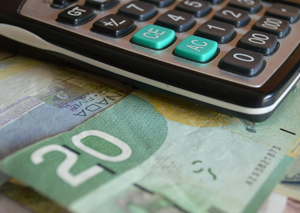 Tax-free investing can help you save money over both the long and short term if you invest using these tips.
Tax-free investing can help you save money over both the long and short term if you invest using these tips.
Tax-free investing and using tax shelters are strategies employed by many successful investors.
Tax shelters are legal investment vehicles that let investors pay less tax. While some are risky and should be avoided, like flow-through limited partnerships, others, like RRSPs and TFSAs, are great ways for Canadian investors to cut their tax bills.
Here are the best ways to defer or lower the amount of tax you have to pay on your investments.
RRSPs are a great way for investors to cut their tax bills and make more money from their retirement investing. RRSPs are a form of tax-deferred savings plan. RRSP contributions are tax deductible, and the investments grow tax-free.
You can put money in RRSP tax shelters each year (up to a limit based on your income) and deduct it from your taxable income. You only pay income tax on your investment, and the income it earns, when you make withdrawals from your RRSP.
In a way, investment gains in RRSP tax shelters give you a double profit. Instead of paying up to 50% of your investment gains in taxes right after you make them, you keep 100% of them working for you until you take money out. That will likely be years later in retirement, when most Canadians enter a lower tax bracket.
If you want to pay less tax on investment income while you’re still working, investing in an RRSP is the way to go.
Tax-free investing with tax-free savings accounts (TFSAs)
A tax-free savings account lets you earn investment income — including interest, dividends and capital gains — tax free. But unlike registered retirement savings plans (RRSPs), contributions to tax free savings accounts are not tax deductible. However, withdrawals from a TFSA are not taxed.
TFSAs can generally hold the same investments as an RRSP. This includes cash, ETFs, mutual funds, publicly traded stocks, GICs and bonds.
Here are three tips you can use to make sure you’re getting the most profit—and tax benefits—from your TFSA:
1.) Keep higher-risk investments out of your TFSA: Holding higher-risk stocks in your TFSA is a poor investment strategy. That’s because high-risk stocks come with a greater risk of loss. If you lose money in a TFSA, you lose both the money and the tax-deduction value of the loss.
2.) Let your current income help you decide between your tax free savings account and RRSPs:RRSPs may be the better choice in years of high income, since RRSP contributions are deductible from your taxable income. In years of low or no income—such as when you’re in school, beginning your career or between jobs—TFSAs may be the better choice.
3.) Consider holding exchange-traded funds in your TFSA: It’s difficult to build a diversified portfolio within your TFSA. Instead, look to exchange-traded funds for TFSA investing.
Tax-free investing strategies can include saving on dividend taxes
We’ve always placed a high value on a record of dividends, mainly because it provides something of a pedigree for stocks we recommend. After all, you can’t fake a record of dividends. It takes a lot of success and high-quality management for a company to have the cash and the determination to declare and pay a dividend every year for five or 10 years. It’s not something you can create on the spur of the moment.
Canadian taxpayers who hold Canadian dividend stocks get a special bonus. Their dividends can be eligible for the dividend tax credit in Canada. This dividend tax credit—available for dividends paid on Canadian stocks held outside of an RRSP, RRIF or TFSA—will cut your effective tax rate.
This means that dividend income will be taxed at a lower rate than the same amount of interest income. Investors in the highest tax bracket pay tax of around 29% on dividends, compared to 50% on interest income. At the same time, investors in the highest tax bracket pay tax on capital gains at a rate of about 25%.
Dividend stocks rarely get the respect they deserve, especially from beginning investors. That’s because a yearly 2% or 3% or 5% dividend barely seems worth mentioning alongside possible yearly capital gains of 10%, 20% or 30% or more.
But dividends are far more reliable than capital gains. A stock that pays a $1 dividend this year will probably do the same next year. (It may even raise the rate to $1.02 or more).
And as mentioned, Canadian investors have the added advantage of the Canadian dividend tax credit to make the most out of their dividend-producing investments.
Many tax-free investment products are frowned upon because of their high levels of risk. How do you manage risk with tax-free investments?
Do you have a favourite tax-free investing product? What makes it a good addition to your portfolio?
 Pat McKeough has been one of Canada’s most respected investment advisors for over three decades. He is the founder and senior editor of TSI Network and the founder of Successful Investor Wealth Management. He is also the author of several acclaimed investment books. This article was published on Nov. 2, 2017 and has been republished on the Hub with permission.
Pat McKeough has been one of Canada’s most respected investment advisors for over three decades. He is the founder and senior editor of TSI Network and the founder of Successful Investor Wealth Management. He is also the author of several acclaimed investment books. This article was published on Nov. 2, 2017 and has been republished on the Hub with permission.

